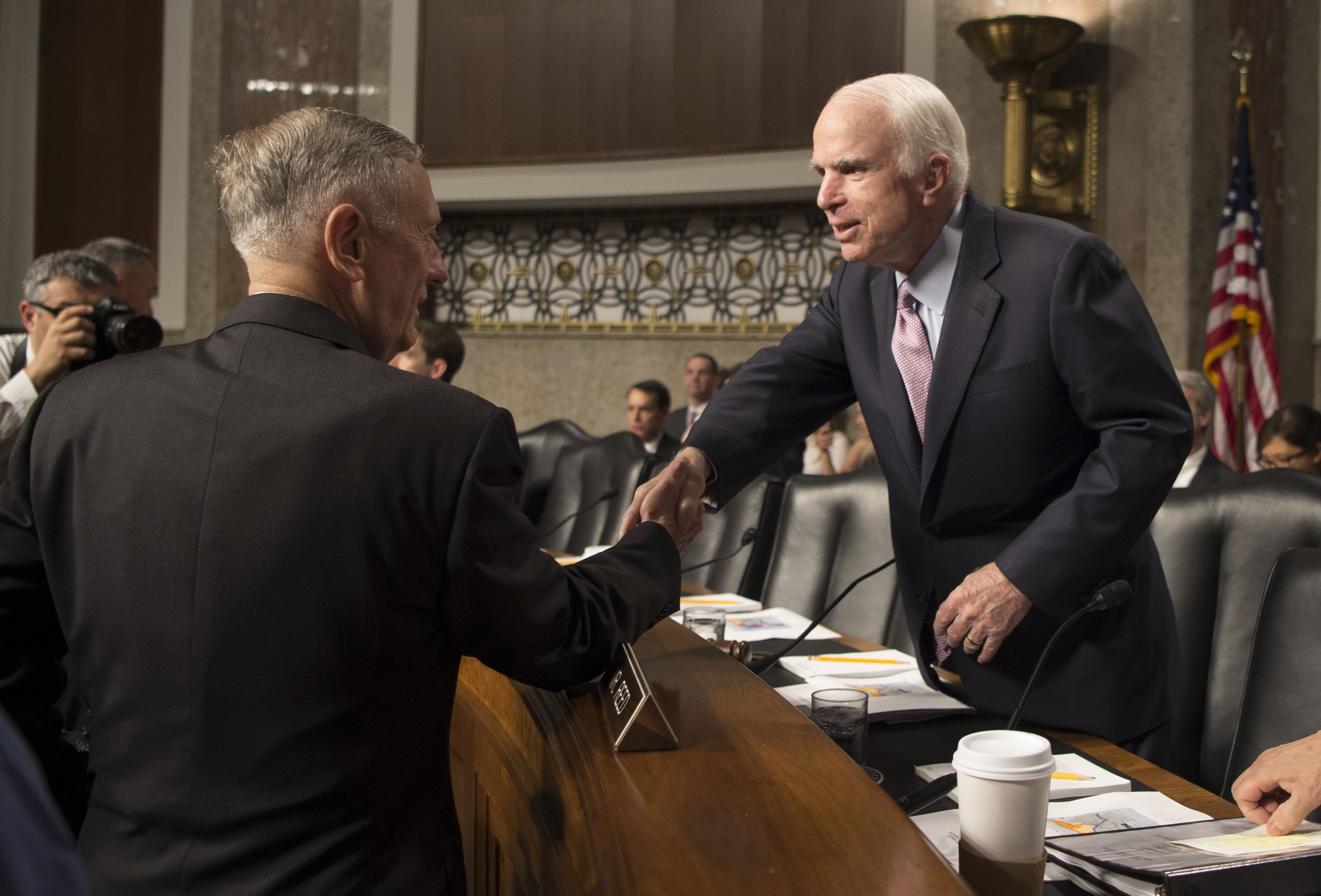
The U.S. Senate passed its version of the Fiscal Year 2019 defense authorization bill, setting the stage for negotiations with members of the House of Representatives to create a unified set of policy and spending priorities to approve later this year.
Named for Sen. John S. McCain (R-Ariz.), the chair of the Senate Armed Services Committee, and passed by a bipartisan vote of 85-10, the Senate National Defense Authorization Act sets a variety of defense policy and spending priorities, including accelerating missile defense, ship and submarine building and military research and development.
The Senate bill authorizes $23.1 billion for shipbuilding, including fully-funding the purchase of 10 battle-force ships and authorizes work developing the Columbia-class of nuclear ballistic missile submarine (SSBN-826). Funding for the Littoral Combat Ship is limited to one hull by the Senate bill until the Pentagon provides more information related to the transition to future guided-missile frigate (FFG(X)).
The bill also authorizes increasing military personnel totals, including setting a new Navy end strength level of 331,900 active duty personnel. Currently, the Navy reports having 325,673 active duty personnel, including 4,398 Midshipmen at the U.S. Naval Academy.
In terms of policy, the Senate bill authorizes the Navy’s adoption several readiness provisions included in the Surface Warfare Enhancement Act of 2018, which was passed in the wake of last year’s deadly collisions between USS John S. McCain (DDG-56), USS Fitzgerald (DDG-62) a pair of commercial ships.
“I am proud that the Senate voted overwhelmingly to pass the National Defense Authorization Act and I’m deeply humbled that my colleagues saw fit to do me the undeserved honor of designating it in my name,” McCain said in a statement. “This legislation continues our reform agenda and helps better position the Department of Defense and the joint force to implement the National Defense Strategy by continuing to restore readiness, rebuild capacity, and modernize capabilities.”
Some Senate priorities differ from those approved by the House. For instance, the Senate authorizes $7.5 billion to purchase 75 F-35 Lighting II Joint Strike Fighters, which is two-fewer than what House members authorized in their bill. The House bill also includes a provision allowing the Pentagon to purchase more F-35 aircraft if the program can save enough money through production efficiencies and other cost savings work.





